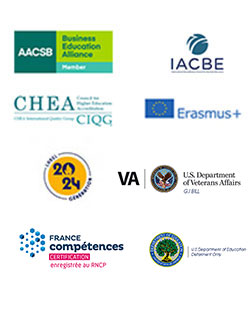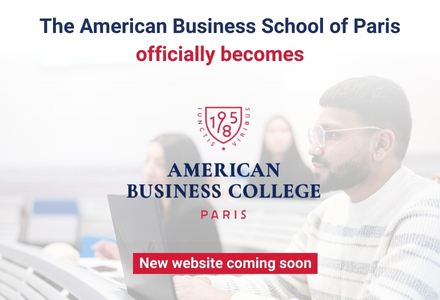

Louis Vuitton, Bulgari, Dior, Fendi, Givenchy, Guerlain, Kenzo, Marc Jacobs, Tiffany & Co, Moët & Chandon, Veuve Clicquot, Krug, Dom Pérignon, Maison Ruinart, Le Bon Marché or Séphora... Are you familiar with any of these brands? Of course, you do.
But did you know that they are part of the same group? LVMH (Louis Vuitton-Moët-Hennessy) has steadily established itself as the world's leading luxury group. The American Business School of Paris shares some insights into the success of this family-owned company which has inherited a rich history and traditional craftsmanship.

From leather goods to cosmetics, perfumes, couture, spirits, retail, luxury hotels and media, the French group headed by Bernard Arnault has evolved since its creation in 1987 following the merger of Louis Vuitton and Moët Hennessy.
Rather than starting from scratch, the group has followed a strategy of acquiring prestigious brands from the very beginning. Their traditional know-how, creativity and sense of innovation have enabled LVMH to showcase French excellence to the world. The brand has thus become the absolute symbol of French luxury and craftsmanship.
With approximately sixty prestigious brands, more than 3,000 stores and more than 163,000 employees worldwide, LVMH is now considered the leader in the luxury goods market. The group's shares are listed on compartment "A" of Euronext Paris and are included in the calculation of the main stock market indexes (CAC 40, DJ-EuroStoxx 50, MSCI Europe and FTSE Eurotop 100). Moreover, LVMH has a market cap of 323 billion euros, with record sales of 64.2 billion euros and a record profit of 12 billion euros in 2021.
The LVMH group's main lines of business:
LVMH - headquartered in Paris, the capital of fashion and luxury - has built its organization on a policy of decentralization that allows each brand to develop independently. At the same time, brands develop smart synergies with each other to avoid head-on competition, for example by sharing research projects.
The group's strategy also relies on a wide range of investors. Christian Dior SE (owned by the Arnault family, 97%) is the majority shareholder of LVMH (46%). There are also 40% of foreign institutional investors, 9% of French investors and 4% of individuals.
LVMH has no intention of slowing down. The group is pursuing its sustainable development strategy through its large research center, its worldwide laboratories and its new Perfumes and Cosmetics research center.
Are you planning a career in the luxury industry? LVMH regularly recruits creative and internationally-minded talents! The American Business School of Paris offers a Bachelor's degree in Fashion and Luxury Retail to prepare you for your future position and give you all the skills you need to succeed in your missions!